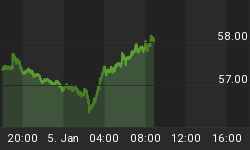
In an environment where financial markets are probably more dependent on the action of central banks than at any point in our lifetimes, the markets parsed every word of Ben Bernanke's Congressional testimony Wednesday.
Efforts To Calm The Markets
If you are looking to understand the Fed's intended message, any article written by the Wall Street Journal's Jon Hilsenrath is worth reading. Mr. Hilsenrath has very good contacts at the Fed. An article with his input interpreted Bernanke's testimony as follows:
Federal Reserve Chairman Ben Bernanke amplified his efforts to calm markets about the end of the Fed's easy-money policies, pointing to a variety of economic risks that could persuade the central bank to keep its large bond-buying program going in the months ahead. "Because our asset purchases depend on economic and financial developments, they are by no means on a preset course," he said at a hearing of the House Financial Services Committee.
Markets Continue To Favor Stock Bulls
One of the best ways to monitor how the markets are interpreting the Fed's tentative plans to taper their bond buying program is to see how asset classes are reacting. Leadership from small caps shows investors are willing to place bets on more unproven companies (read riskier). As the chart below shows, small caps (IWM) continue to outperform the general market (SPY), which lends support to the bullish argument for stocks.

Bernanke Drops Numerous Qualifiers
Mr. Bernanke's testimony was peppered with several 'ifs'. One example noted by the Wall Street Journal:
"If the outlook for employment were to become less favorable, if inflation did not appear to be moving back toward 2%, or if financial conditions--which have tightened recently--were judged to be insufficiently accommodative to allow us to attain our mandated objectives, the current pace of purchases could be maintained for longer," he said.
As we outlined on July 15, the tapering dialogue at the Fed is more about escalating fears of another round of asset bubbles rather than confidence in the economy or fears about escalating inflation. Mr. Bernanke continues to emphasize that interest rates will be maintained at low levels for an extended period of time, which means monetary policy will be stock-friendly for some time.
Investment Implications
As noted above, small caps have been leaning toward the risk-on camp. Similarly, when technology stocks lead, all things being equal, it tends to send "healthy advance" signals. Tech stocks have been strong relative to the broader market, which is what stock bulls want to see.

Our market model tracks numerous "as long as this is in place, the advance in stocks is typically sustainable" indicators. Similar to the performance of small caps and the QQQ's, the broader range of inputs continues to favor stocks over bonds and stocks over shorting. As long as the tapering bias remains intact and the technicals remain healthy, we will hold our broad U.S. positions (SPY) and leading sectors, such as small caps (IWM), financials (XLF), and technology (QQQ) through any "give back" that remains within the realm of normal.















